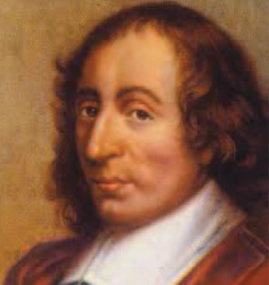2 Finite Sample Spaces – Combinatorial Methods

French mathematician, physicist, and philosopher. From an early age, he showed exceptional skills in mathematics and physics; at the age of 11, he wrote an essay on sound waves, while his first scientific endeavor, Essai pour les coniques (Essay on Conics), written at the age of 17, drew the attention of René Descartes, one of the leading mathematicians of that time. While still a teenager, Blaise Pascal became obsessed with calculating machines. In 1642, he completed the design of the first computer, which was, however, too expensive to be put into production.
In 1654, motivated by a gambling problem posed to him by the French nobleman Chevalier de Méré, he started a correspondence with another renowned French mathematician, Pierre de Fermat. The exchange of ideas between the two Frenchmen is now considered by many historians to have laid the foundations not only of probability theory but also of modern scientific thinking.
2.1 Finite Sample Spaces with Events of Equal Probability
In this chapter, we deal exclusively with sample spaces possessing a finite number of elements. Let us assume that ![]() are the elements of our sample space
, that is
are the elements of our sample space
, that is
Then, every nonempty subset ...
Get Introduction to Probability. now with the O’Reilly learning platform.
O’Reilly members experience books, live events, courses curated by job role, and more from O’Reilly and nearly 200 top publishers.

